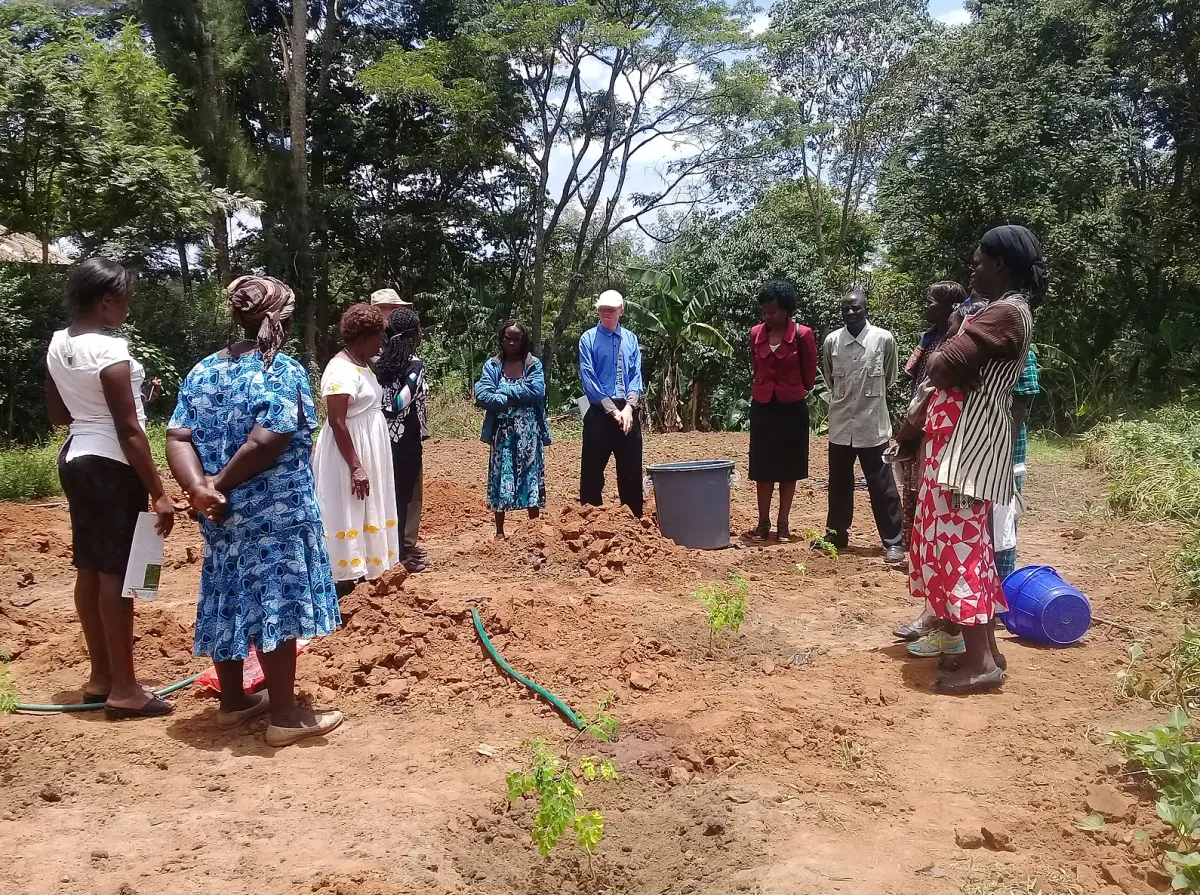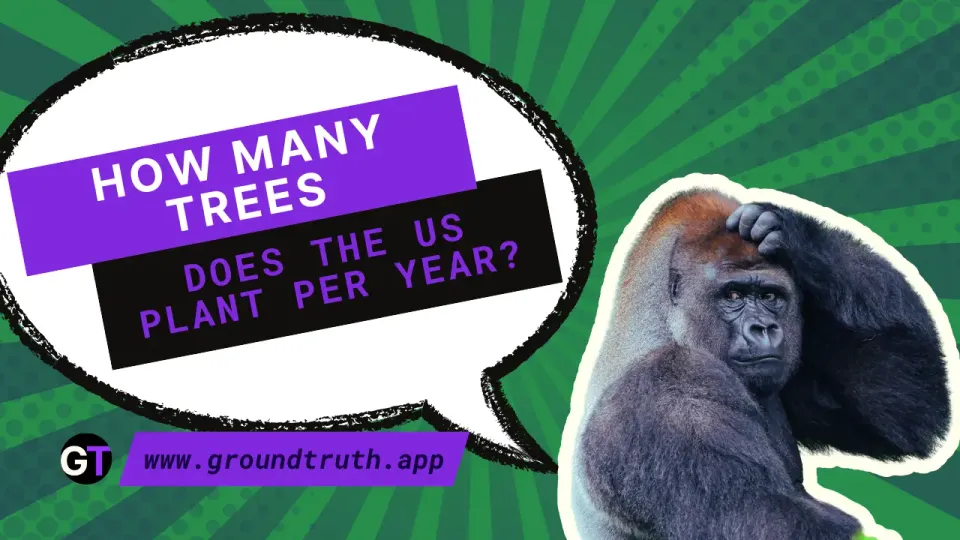Empowering Women to Restore Africa’s Degraded Lands 🌍♀️
“I also look forward to engaging and learning from other Indigenous women globally on their restoration approaches and solutions to shared challenges.”

This article by Mercy Mulanga, Caroline Njiru and Christine Mboya originally appeared on the World Resources Institute website.
Kingasunye Naiguta remembers the vast Mau Forest that used to cover her home of Narok County in southwestern Kenya when she was young. She remembers her parents chopping the forest’s trees and going out to sell the charcoal they’d make from the wood. Years later, Kingasunye watched the forest burn.
Today, she and other members of the Ololunga-based Paran Women Group, a collective of 64 Indigenous women’s groups in the region, are working to bring this ecosystem back. Since its creation in 2005, Paran has not only restored hundreds of hectares of degraded land, but it has created a culture of social empowerment and economic resilience and preserved the traditional knowledge of women tending to their native lands.
In many African communities, women are the custodians of biodiversity; Indigenous women, specifically, have long been the unsung heroes of land management. From seed selection to soil management, their deep understanding of the local landscape and native species is crucial for restoration projects.
This wealth of knowledge often goes undocumented, unrecognized and under-resourced. But that’s starting to change. As Naiyan Kiplagat, an Indigenous woman from the Ogiek community in Kenya’s Greater Rift Valley and founder of Paran Women Group shared, “Our grandmothers taught us which plants heal the soil. Now, we're teaching scientists.”
Inclusive Finance Enables Women-Led Restoration Across Africa
Across Africa, women-led grassroots groups like Paran are spearheading a green revolution. At the heart of these efforts is a powerful enabler: inclusive finance.
Unlike traditional funding models, which often favor larger, well-established organizations, inclusive finance tools are designed to empower community-led initiatives, especially those involving Indigenous women and youth, with the aim of regenerating the environment and communities. They ensure that financial resources are accessible, affordable and aligned with the cultural values and priorities of Indigenous communities. And they address systemic barriers, such as insecure land tenure and limited access to formal banking, while promoting equity through participatory decision-making and capacity-building in financial literacy. These models not only support the sustainability of restoration projects, but also enhance community resilience, strengthen local economies and amplify the leadership of traditionally underrepresented groups.
Through this approach, TerraFund — a partnership of World Resources Institute, One Tree Planted, Realize Impact and Barka Fund — has made nearly 200 investments in these “restoration champions” since May 2022. Central to its model is providing flexible, accessible and longer-term funding tailored to a grassroots organization’s specific needs. For example, TerraFund’s loans bear an interest rate that is well below market. Its six-year grants include funding to cover monitoring and maintenance costs well after planting finishes — a rarity for restoration projects. And its staff connect local organizations with training opportunities that can build staff’s long-term skills related to financial management and monitoring, evaluation and learning.
TerraFund’s model is particularly meaningful for Paran and other Indigenous and women-led organizations because it asks them to engage their communities in decision-making when designing projects and requesting funding. This ensures that investments address local priorities, helping Indigenous groups lead restoration efforts that have a significant and lasting impact on their landscapes.
“As Indigenous women, we are the custodians of our land,” Naiyan says. “Through the TerraFund support, we have managed to restore 100 hectares of degraded lands in our community, leveraging intergenerational transfer of Indigenous knowledge.”
And just like other financial innovations, such as green bonds, microfinance for conservation and outcome-based financing, the TerraFund model is spreading across the African continent. Together, these tools are bridging the gap between global capital and local action, creating fertile ground for community-led restoration projects. Backed by independent monitoring that can validate the claims of grassroots organizations, inclusive finance has helped communities across Africa led by Indigenous women make tangible progress toward restoring ecosystems and improving biodiversity.
Paran Women Group’s achievements demonstrate this transformative power. Over the last year, the women have focused on rehabilitating key water catchment areas in the Mau Forest and have distributed 70,000 seedlings to more than 3,000 women to build agroforestry systems that combine trees and farmland. The collective is on track to gather an additional 30,000 seedlings from collaborating women’s groups, with the goal of planting 150,000 trees by December 2025.
Confronting Systemic Barriers
Yet despite women’s crucial role as environmental stewards, and the progress made so far in Kenya and across Africa, systemic barriers rooted in cultural norms and institutional frameworks continue to impede their full involvement. These obstacles are wide-ranging, from restricted access to land ownership and educational opportunities, to exclusion from critical decision-making processes that shape environmental policies and practices.
One of the most pressing issues confronting women in Kenya is the pervasive lack of land rights. Within many of the country’s cultures, laws often inhibit women’s ability to own or inherit land, a legal framework that not only undermines their status within the community, but also severely limits their capacity to engage in long-term sustainable land management.
The intersectionality of gender and Indigenous identity can further complicate their plight. Most Indigenous communities in Kenya have historically faced marginalization due to their unique cultural practices and ways of life, which are intricately tied to their ancestral lands. As a result, Indigenous women like Naiyan find themselves facing both gender discrimination and ethnic marginalization, a dual layer of disadvantage that stifles their voices in environmental governance.
The widespread exclusion of women from decision-making processes further exacerbates these challenges. Environmental policies are often crafted without considering the perspectives and needs of the Indigenous women who possess traditional ecological knowledge critical. This also undermines restoration initiatives and perpetuates gender inequities.
Strengthening Women’s Rights Can Boost Restoration
Here, too, inclusive finance can play a role, helping women break down these systemic barriers. For instance, women-led restoration projects can help women secure land tenure through formal legal channels like land registration deeds, which involve legally documenting land ownership in the names of women. In community contexts, a reliable source of finance can help women negotiate or formalize agreements with local leaders or land tenure committees. For Indigenous women in Kenya’s Greater Rift Valley in particular, challenging entrenched land tenure systems means confronting longstanding socio-cultural and legal barriers that have historically marginalized their voices.
For women, especially those from Indigenous communities, restoration activities demonstrate their effective stewardship of the land, which often aligns with customary or legal requirements for tenure recognition. Restored land becomes more productive and valuable, providing evidence of women’s capability and commitment, which not only reinforces their legitimacy as land managers in the eyes of the community, but it can also fulfill conditions for formal land registration or renewal of community agreements. This can set off a positive feedback loop where their secure land tenure encourages further investment in restoration, and successful restoration can further strengthen their land claims.
Global Impact of Local Land Restoration
Sharing success stories like that of Paran Women Group is key to expanding women’s involvement in sustainable land management. Global summits like the UN Convention to Combat Desertification Conference of Parties (UNCCD COP) provide important opportunities to do just that. Lifting up voices like Naiyan’s in these venues can empower local communities while fostering resilience against climate change.
“As an Indigenous woman, the UNCCD COP is a great opportunity for me to represent my community and amplify the impact of community-led restoration initiatives — especially how our local knowledge has transformed our landscape,” she says. “I also look forward to engaging and learning from other Indigenous women globally on their restoration approaches and solutions to shared challenges.”
For women like Naiyan and her peers, these gatherings provide an important platform for showcasing how investments in local and Indigenous women are transforming landscapes. With the right finance and partnerships, women across Africa can play an increasingly pivotal role in restoring degraded landscapes, safeguarding biodiversity and ensuring the sustainability of the natural resources on which we all depend.
License
Mulanga, Mercy, Caroline Njiru, and Christine Mboya. "Finance for Women Is Key to Restoring Africa’s Degraded Lands." World Resources Institute, November 25, 2024.Republished under a Creative Commons Attribution 4.0 International License




